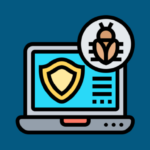Risk management is a crucial part of any software development project. Without it, you could end up with a final product that doesn’t work, or worse: one that doesn’t meet the business requirements. Risks in software development come in various forms. Ideally, you should implement a risk management plan before developing your product. The plan should include ideas for handling problems like bugs and user errors. It should also include ways to test your product before releasing it to the public.

The best way to manage risk is by identifying all possible risks before they happen—and this can only be done by having a robust risk management plan in place. In the sections below, we have discussed all you need to know about risk management in software development.
What is Risk Management?
Risk management is the art of identifying, assessing, and prioritizing all possible risks in a business or project and then determining how to mitigate those risks to an acceptable level. A risk is any situation that could harm your business, project, or goals. Risks can be both internal (within your company) and external (outside your company). Risk management aims to understand those risks and either eliminate them or reduce their impact.
When building new software, you must ensure it works for everyone. That means your team has to think about how the software will work for people using it on different devices (phones, tablets, laptops), with different operating systems (Android, iOS), and in different languages. Some of the common risks in software development include the following:
- Scope risk: The risk that the scope of a project will change or grow in ways that are not anticipated or budgeted for. This can be caused by new features being added, or it can be caused by changes in your client’s needs and expectations.
- Quality risk: The risk that the quality of your product will not meet the standards set by your client. This could mean that the product doesn’t work as intended or doesn’t meet their aesthetic requirements, among other things.
- Time risk: The risk that you won’t complete your project within the allotted timeframe. This can be caused by unexpected changes in scope or quality and unforeseen delays due to factors outside of your control (e.g., illness).
Why Is Risk Management Plans for Software Development Important?

The benefit of risk management in software development can’t be overstated. It’s one of the essential parts of the process and something you should be doing from day one. Risk management plans help you identify potential problems and ensure that you are ready when the time comes to implement them. That said, here are the reasons why risk management in software development matters.
It Helps You Prioritize Your Projects
When you have many projects going on at once, it can take effort to figure out which one needs attention first. A risk management plan will tell you which projects are most likely to fail and give you an idea of how much time they need before they are ready for implementation. This will let you decide which project gets more resources and funding first so that when it comes time for implementation, all parties involved will know exactly what’s expected from them.
It Keeps Everyone in the Loop
When everyone knows the possible risks and how to respond to each of them, managing risks becomes a team effort. The benefit is that the organization can save time and money since issues can be identified and mitigated before they become costly.
It Helps Improve Communication Between Stakeholders
Risk management gives all the stakeholders, from employees to top management, a shared vocabulary for discussing risks. That way, they know how to ask questions and express concerns effectively. Risk management also helps maintain team morale by allowing teams to talk about their concerns or weaknesses rather than feel they have to keep them hidden from each other or their managers.
How to Get Started With Risk Management
Software development is a high-risk industry. The nature of software means that there are many opportunities for things to go wrong, and even one mistake can have devastating consequences. Here are three actionable tips for creating a risk management plan in the software development niche.
- Understand the risks. First, you need to understand the various risks and what they mean for your product.
- Ensure you’re using the right tools for the job. A good risk management tool will make it easier for you to manage all of your risks in one place and keep track of their status as they progress.
- Build contingency plans. That way, if something goes wrong, it doesn’t derail everything you’ve built and leaves you scrambling at the last minute.
The Bottom Line
Risk management is not just about avoiding problems. It’s also about planning for them so that you’re prepared to mitigate their impact and move forward when they happen. You can always seek help when creating a risk management plan to ensure it works for your team, your product, and your customers.



Leave a comment
Have something to say about this article? Add your comment and start the discussion.